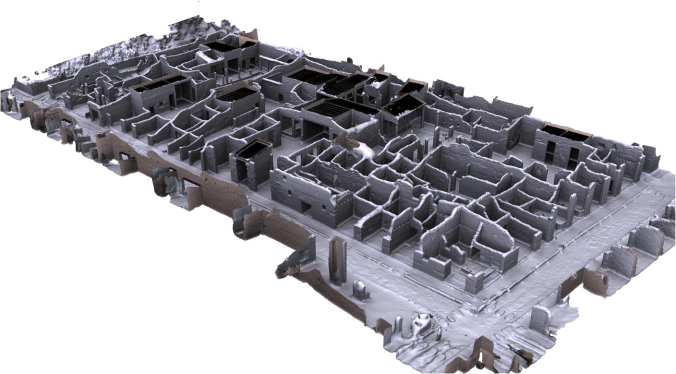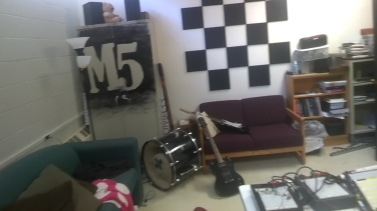Introduction
Having raised in Iran, I have always had a special love for Persepolis. Literally translating to “the Persian City,” Persepolis was the ceremonial capital of the Achaemenid Empire, built by Darius the Great [1]. Being fascinated by the architectural details and the sculptures on the walls, I spent some of my free time as a child to look at online sources and encyclopedias to learn more about the site and its usage during the Achaemenid Empire. Among the most interesting resources that I found were animations and online navigable 3D-reconstructions of the site which showed the Persepolis as it appeared during the Achaemenid Empire and explained how different parts of the building were used and for what purpose.
A few years later, when I visited the Site again, I attempted to walk through the site and remember how they buildings looked like in the 3D-reconstructed models that I had explored. To my surprise, I found this task quite challenging and at times impossible!
This is why when I was given the opportunity to explore the 3D-Structure sensor and the google glass in the “Digital Humanities” class at UMass, I immediately thought of the experience I had at the Persepolis and how I could utilize this portable tools to create a system that could benefit others who visit historical sites. In the following sections, I will propose and explore a solution for this situation.
Problem
Historical site such as Persepolis (Iran), city of Pompeii (Europe), The Colosseum and Forum (Rome), and many other ones have been of interest to the public for exploration and education purposes. However, due the historical events and natural degradation, these historical sites have lost the authentic feel of how they looked when they were build, making it difficult for visitors to appreciate the sites and learn about the architectural details and functionality of different sections of the buildings. This projects aims at proposing a solution which could make the experience of visiting a historical site more engaging, interesting, and informative by providing a system which allows the visitors to experience the site as it looked in the past.
Solution
Design
We first define the following specifications for the system:
- Portable
- Intuitive User Interface
- Collaborative Access to models
- Fast Data Collections Method
- Unobtrusive
To satisfy the specifications above, we suggest a system that follows the following block diagram:

The non-stationary parts of the system include a Structure Sensor which can be used for rapid data collections and a Google Glass which will be carried by the visitor. Due to the small form-factor and low weight associated with these tools, we can meet our portability specification.
Moreover, the user interface between the visitor and the system is only a screen on the google glass and there is no other input required from the visitor making it intuitive to use. The Glass will automatically provide all the data necessary for the back-end of the system.
We also choose to host the Model Database online and provide public access for everyone in order to make the system more accessible and more widely used among the visitors.
Finally, the Structure Sensor is used for data collection making it very fast and easy to collect data and Google Glasses small screen used to provide the rendered image to the user without blocking their vision.
In this system, one will scan the site into a digital model, reconstruct and fix the model using a Computer Aid Design (CAD) software and post the model online. Next, the model can be accessed by a rendering engine that communicates with Google glass. The rendering Engine will use the online model and the GPS coordinates and the magnetic coordination information provided by the Glass to create a 3D-image of what the online model looks like if the user was standing in the same location in the digital model.
This link provides a demonstration of what a computer model of Pompeii could look like and what kind of image could be shown on the Google Glass display as the user walked through the site of Pompeii.
Structure Sensor
The structure sensor is used to scan the room and create a digital model of the site at a quick pace. Moreover, the portability of the scanner which contains a small camera attached to an iPad makes the data collection for the system very convenient and accessible. The exported model from the structure sensor can be then directly input to model editing software such as Blender, Maya, and 3D’s Max for reconstruction purposes and finishing touches to turn the model to how the building had looked like in the past. Below is the sample of what a reconstructed model of the city of Pompeii could look like. 
 In order to demonstrate the functionality of the structure sensor, I scanned one of the rooms in Marcus Hall, UMass which has unbalanced lighting to demonstrate an incomplete model- this models a scan from a historical site that has parts of the building missing. If one has the necessary skills to use 3D modelling software, he could fix the model to be complete and flawless to assist the rendering engine. You can view this model here (Music Room – Room5, Marcus Hall, UMass):
In order to demonstrate the functionality of the structure sensor, I scanned one of the rooms in Marcus Hall, UMass which has unbalanced lighting to demonstrate an incomplete model- this models a scan from a historical site that has parts of the building missing. If one has the necessary skills to use 3D modelling software, he could fix the model to be complete and flawless to assist the rendering engine. You can view this model here (Music Room – Room5, Marcus Hall, UMass):
https://www.3dvieweronline.com/members/Idf014d3d6593c369164be
6775d5fab1af/OavCfnB1SvPQqUD?position=[-2.24,-0.15,-0.01]&quat=[0.71,0,-0.7,0.05]&target=[0,0,0]
Open Access Collection
We also choose to store the models in an online database. This will make it easy for anyone with a google glass to contact the database and load the model, or for anyone who wants to contribute to simply create models of the site that they are interested in and upload them. Note that this could have copyright complications if one wants to protect their models, however, since this is an open source solution, users should understand that by uploading to the database, they make their models public and free for everyone.
Rendering Engine
This section is outside my area of expertise, however, by looking at how the computer games have evolved in the past years and the graphics that they can render on the fly, I suspect that it will not be to difficult to create a rendering engine which could provide the followings:
- Contact Google Glass over Wi-Fi
- Receive GPS locations from the Glass
- Receive cardinal directions from the Glass
- Load the model from the database based on the GPS locations
- Place a camera in the model based on the GPS location and cardinal directions
- Render the model from the aforementioned virtual camera
- Send image to the Glass along with an audio file explaining the part of the building being rendered.
Google Glass
The last piece of this system is the Google Glass. Google glass is a portable system that can be worn as a glass and provides many functionalities for the user. Google Glass communicated with the cell phone and receives GPS information which it can transfer. This also allows the system to provide cardinal directions regarding which way the user is facing and looking at. These information, then, along with a photo of what the user is looking at is send to the rendering engine which will render and image that matches what the visitor is looking at from the reconstructed online model and sends it back to the glass. The Glass, finally, displays the image on its small screen and plays the audio file that was received for the user.
 Since for this project I did not have access to a historical site containing historical ruins, I decided to solve the problem backwards, that is I recorded the video using google Glass from a complete which would be the output of the rendering engine when it correctly implemented. This video corresponds to the same model that was scanned by the structure sensor. You may find a link to the 3d model in the “Structure Sensor” section and you may find the recorded video below:
Since for this project I did not have access to a historical site containing historical ruins, I decided to solve the problem backwards, that is I recorded the video using google Glass from a complete which would be the output of the rendering engine when it correctly implemented. This video corresponds to the same model that was scanned by the structure sensor. You may find a link to the 3d model in the “Structure Sensor” section and you may find the recorded video below:
Conclusion
We explored a system that uses Google Glass and the structure sensor to show visitors of the historical sites how the area they are looking at in a historical site looked like when the building was intact and give them information about the item they are looking at. The use of the Glass and the structure sensor provides portability and convenience when interacting with the system, both for data collection and Visitor User Interface section. Realization of this system would require team of engineers, computer scientists, graphic designers, and people familiar with the Site to collaborate. However, if done properly, I believe that it can transform visitors experience when visiting historical sites and can provide a more intuitive way for them to learn about the history of the site.